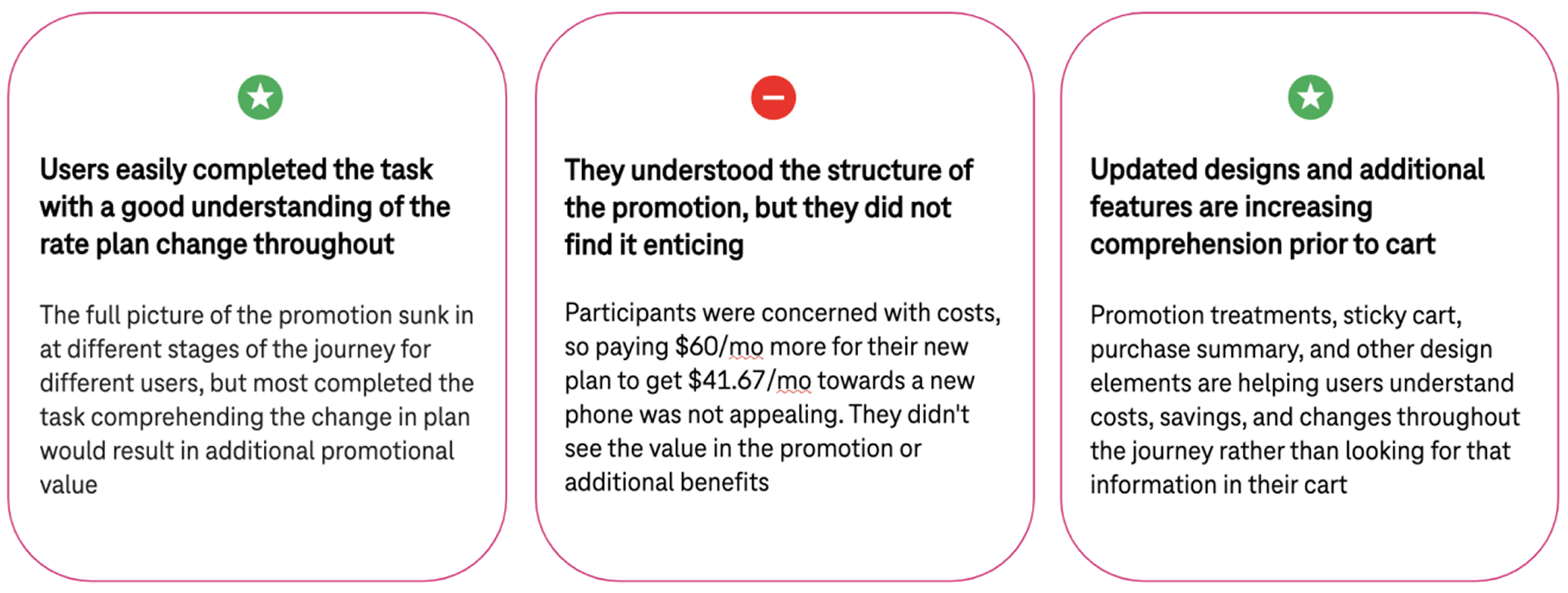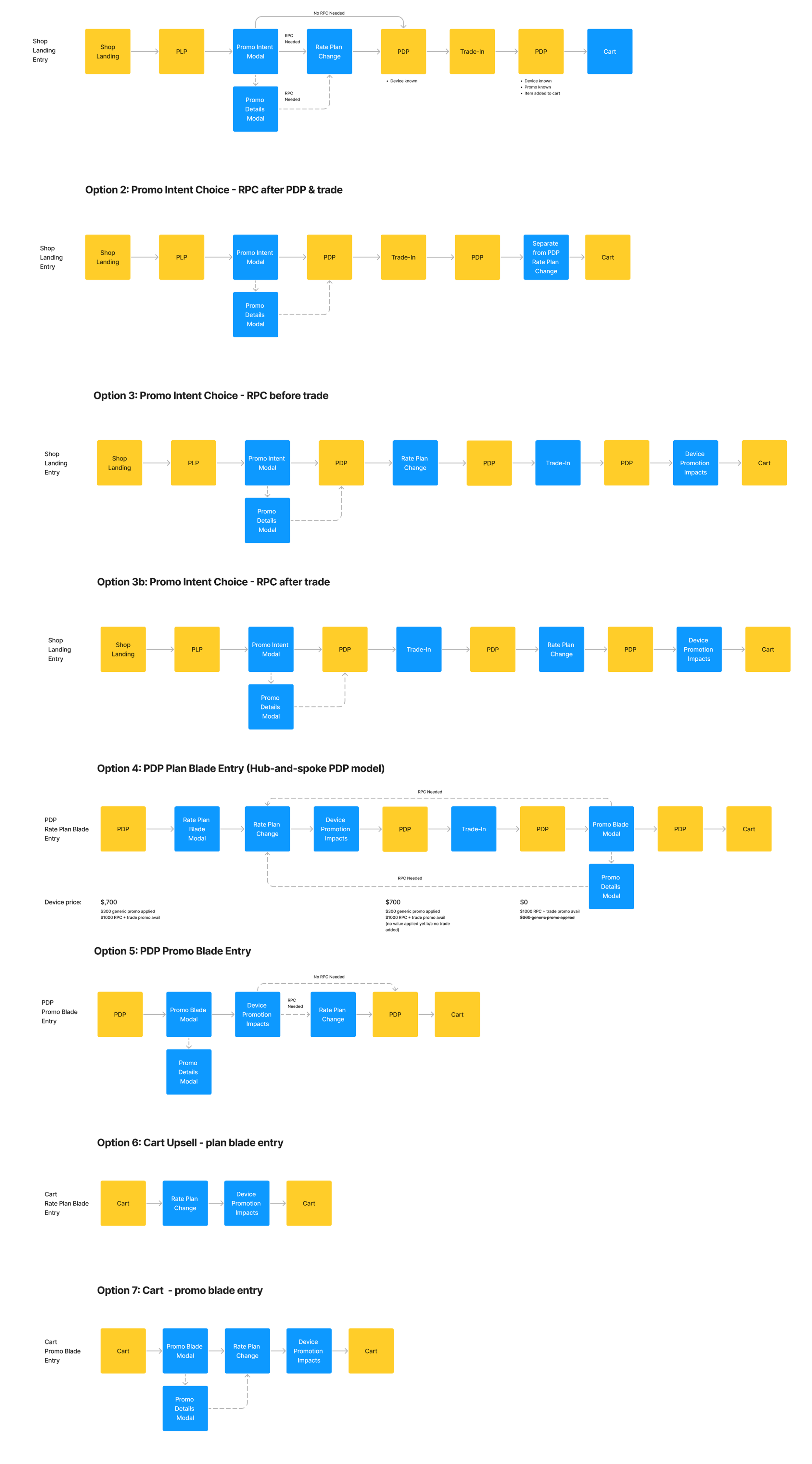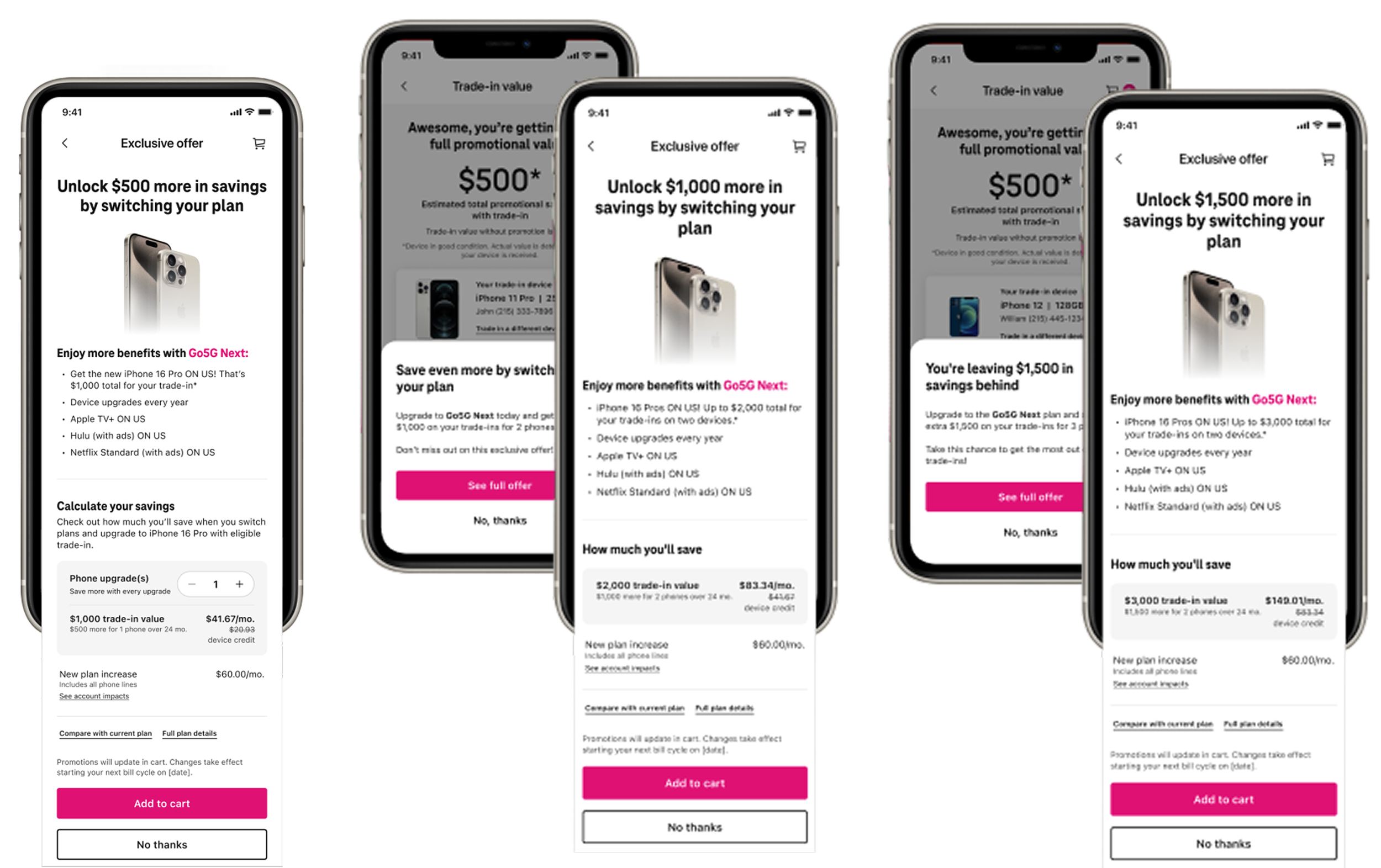Simplifying Complex Transactions for a Better Digital Experience
How my team transformed two of the most complex digital transactions, rate plan changes and trade promotions, into transparent, intuitive experiences that doubled conversion.
My role: Product Design Manager
Team: 2 Designers, 2 Product Managers, 1 UX Researcher, 2 Engineers, 2 DBMs
Timeline: Multi-phase rollout (Aug 8–29 and Aug 15 launches)
Goal: Simplify customer self-service experiences, reduce care calls, and improve digital conversion.
The Challenge
Our eCommerce experience was full of friction:
Customers with mixed account types couldn’t change their plans online.
Promotions like “Get It On Us” were confusing, requiring customers to calculate lump sums and recurring credits just to understand their savings.
Limited visibility into savings potential across multiple device upgrades.
Upselling to higher rate plans was never contexual and available in the commerce flow.
The result: poor conversion and heavy reliance on Care.
The Process
This wasn’t a linear project, it was months of iterative design and stakeholder collaboration.
Conducted multiple design reviews with Product and Care to ensure clarity in flow and language.
Worked with analytics to validate each step of the self-service journey.
Partnered with engineering on defect prioritization and design QA ahead of NPI.
Advocated for customer transparency at every decision point, especially around pricing display.
Through a variety of unmoderated and moderated user tests with UXR, UX and Product collaborated in earnest identifying a variety of use cases and conent updates that would help customers to fully comprehend the experience, pricing, and benefits of the promotional plan change upsell.
Our focus was on pricing transparency, promotion conversion, and offer comprehension.
UX Research
Initial participants were not able to easily understand all the details, costs, and promotion they were presented during the upgrade and rate plan change process.
Users were looking for a side-by-side comparison or a visual highlighting plan differences to confidently make an informed decision.
We developed a variety of prototypes testing different flows and offer sequences to determine customer sentiment.
100%
Participants easily completed the task of upgrading with rate plan change, but is was a lot of info and math to keep track of.
13%
N=2 participants would have contacted support to help understand the process and monthly cost.
44%
Participants who incorrectly believed only their individual line was impacted by the rate plan change.
31%
Participants understood the monthly cost of their line increased due to the rate plan change
63%
10 out of 16 participants rated the experience as very transparent.
50%
Participants likely to continue with promotion. Others needed an easier way to compare plans or were not interested in paying more for a new plan.
20%
Users who believed there were no benefits or their monthly cost went down by switching plans.
User Flows
We worked with product and development to identify the correct sequencing of the upsell offer and rate plan change to determine any/all api and data challenges across our platforms. We tested these approaches to understand the mental model of our customers who would be likely to convert on a rate plan change during a device upgrade flow.
We worked with product and development to identify the correct sequencing of the upsell offer and rate plan change to determine any/all api and data challenges across our platforms. We tested these approaches to understand the mental model of our customers who would be likely to convert on a rate plan change during a device upgrade flow.
Iterations
Solutions Delivered
Rate Plan Change for Hybrid BANs (August 2025)
Enabled self-service rate plan changes for hybrid accounts.
Customers can now complete the process digitally, reducing Care dependency.
Result: Step conversion and overall conversion nearly doubled post-release.
Ongoing: Measuring call reduction with Care partners.
Full RDC / 100% RDC Trade Simplification (Aug 2025)
Shifted from complex lump-sum + recurring structure to one clear monthly credit model.
Simplified communication both at purchase and on billing statements.
Initially launched to test promotions, later scaled across all upgrade trades.
Defect Reduction & Quality Improvements
100+ tickets deployed leading up to NPI to improve reliability and remove friction points.
Focused on improving consistency and visual polish to increase customer trust.
The Impact
30% net new incremental value in base sales after launch
These updates represent more than new functionality, they reflect a cultural shift toward customer simplicity and operational efficiency.
By bridging gaps between Product, Engineering, and Care, we delivered a more transparent, trustworthy experience for millions of customers.
These releases represented years of learning and collaboration.
By grounding decisions in customer simplicity, we delivered measurable improvements while reducing the operational burden on Care.
“It’s the first time our hybrid customers can complete a rate plan change without calling in.”
— Care Partner, Post-Launch Feedback
My Reflection
This was not a fast or easy win.
There were rounds of rework, conflicting feedback, and late-night design reviews. But through patience and persistence, we transformed complex transactions into experiences that are intuitive, measurable, and scalable.
Key Learnings
Simplification is rarely simple — it requires alignment across every team.
Data and empathy are your best tools when negotiating design trade-offs.
Sometimes progress means taking the long road, as long as it leads to clarity.







